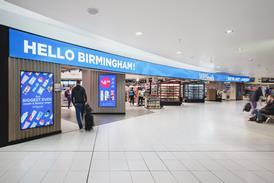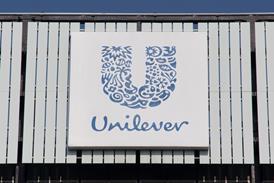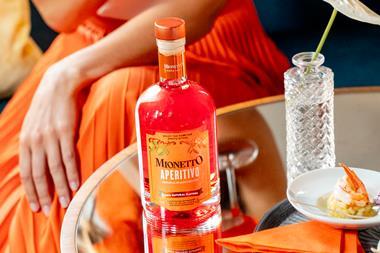Visitors to E&J Gallo's headquarters in Modesto can look around the company's warehouse, but they have to do it by minibus, such is the size of the place.
Spanning 45 acres, the warehouse is the point from which all the company's wine is distributed. Seven million cases of wine leave there every six weeks.
The scale of the operation is testament to the exponential growth of the Californian wine industry. Thirst for brands such as Gallo's Turning Leaf and rival Blossom Hill means that US wine is close to overtaking France in the UK market and is predicted to do so within the next year.
For Californian wine producers the UK is one of the most promising markets, thanks to consumers' loyalty to brands. Gallo is the fastest growing wine brand and the company recently changed the name on all its California wines from Ernest & Julio Gallo to Gallo Family Vineyards to further boost brand recognition.
Jane Hunter, marketing director for western Europe at Gallo, says that while the UK wine market has grown 88% in the past eight years to £4.2bn, branded wines have grown 181% during the same period. But with the leading brand holding only 7% of the market, there is scope for growth, she says.
Gallo is also investing heavily in the UK market. South of Modesto, in Livingston, is another E&J plant, which it claims is the largest wine plant in the world, with 70% of its output going to the UK market.
The company has invested $35m in the plant over the past three years, even turning to the crisps industry to help develop grape-shaking trays.
Gina Gallo, granddaughter of Julio Gallo, says that with so many different types of wine sold in the UK, there is still a need to educate consumers about Californian wine. "There is more sophistication about wine in the UK," she says. "California was here in the beginning, then you had wines from Australia, Chile, Argentina and South Africa. Consumers understand wines from France, but not as much from California."
Not all Californian wine makers are thrilled about the popularity that some US wines have achieved in the UK. Home to the 'two buck chuck' - created to cope with the oversupply of grapes in the US - some wineries say that Californian wines have a similar cheap and cheerful image in the UK.
George Rose, vice president of public relations at wine maker Kendall-Jackson, says: "Californian wines that have poured into the UK have sent the wrong message about quality."
He says UK retailers' attempts to drive down wine prices have affected the perception of Californian wine. Because a lot of wine grapes are grow on hillsides, harvesting is more expensive than in other regions, which needs to be reflected in the price.
"Many producers are hesitant about the UK because of the pricing strategy of UK retailers. We tried to create wine at the low end but it didn't work. We have to give people a reason to pay more."
Both Rose and Gallo agree that red wines, especially Pinot Noir, will be the next growth area for California. Says Gallo: "Pinot Noir is on fire. Interest has never been higher." n
Spanning 45 acres, the warehouse is the point from which all the company's wine is distributed. Seven million cases of wine leave there every six weeks.
The scale of the operation is testament to the exponential growth of the Californian wine industry. Thirst for brands such as Gallo's Turning Leaf and rival Blossom Hill means that US wine is close to overtaking France in the UK market and is predicted to do so within the next year.
For Californian wine producers the UK is one of the most promising markets, thanks to consumers' loyalty to brands. Gallo is the fastest growing wine brand and the company recently changed the name on all its California wines from Ernest & Julio Gallo to Gallo Family Vineyards to further boost brand recognition.
Jane Hunter, marketing director for western Europe at Gallo, says that while the UK wine market has grown 88% in the past eight years to £4.2bn, branded wines have grown 181% during the same period. But with the leading brand holding only 7% of the market, there is scope for growth, she says.
Gallo is also investing heavily in the UK market. South of Modesto, in Livingston, is another E&J plant, which it claims is the largest wine plant in the world, with 70% of its output going to the UK market.
The company has invested $35m in the plant over the past three years, even turning to the crisps industry to help develop grape-shaking trays.
Gina Gallo, granddaughter of Julio Gallo, says that with so many different types of wine sold in the UK, there is still a need to educate consumers about Californian wine. "There is more sophistication about wine in the UK," she says. "California was here in the beginning, then you had wines from Australia, Chile, Argentina and South Africa. Consumers understand wines from France, but not as much from California."
Not all Californian wine makers are thrilled about the popularity that some US wines have achieved in the UK. Home to the 'two buck chuck' - created to cope with the oversupply of grapes in the US - some wineries say that Californian wines have a similar cheap and cheerful image in the UK.
George Rose, vice president of public relations at wine maker Kendall-Jackson, says: "Californian wines that have poured into the UK have sent the wrong message about quality."
He says UK retailers' attempts to drive down wine prices have affected the perception of Californian wine. Because a lot of wine grapes are grow on hillsides, harvesting is more expensive than in other regions, which needs to be reflected in the price.
"Many producers are hesitant about the UK because of the pricing strategy of UK retailers. We tried to create wine at the low end but it didn't work. We have to give people a reason to pay more."
Both Rose and Gallo agree that red wines, especially Pinot Noir, will be the next growth area for California. Says Gallo: "Pinot Noir is on fire. Interest has never been higher." n



















No comments yet